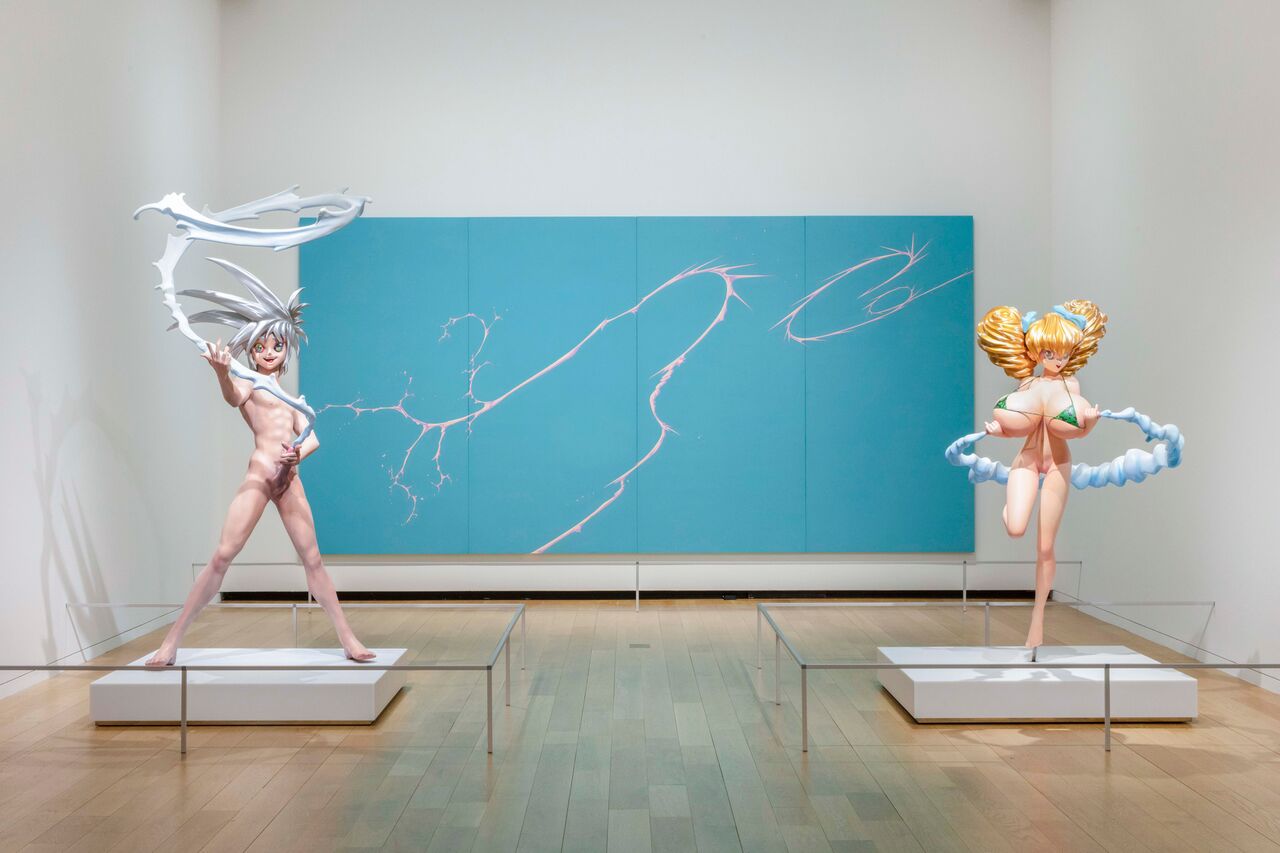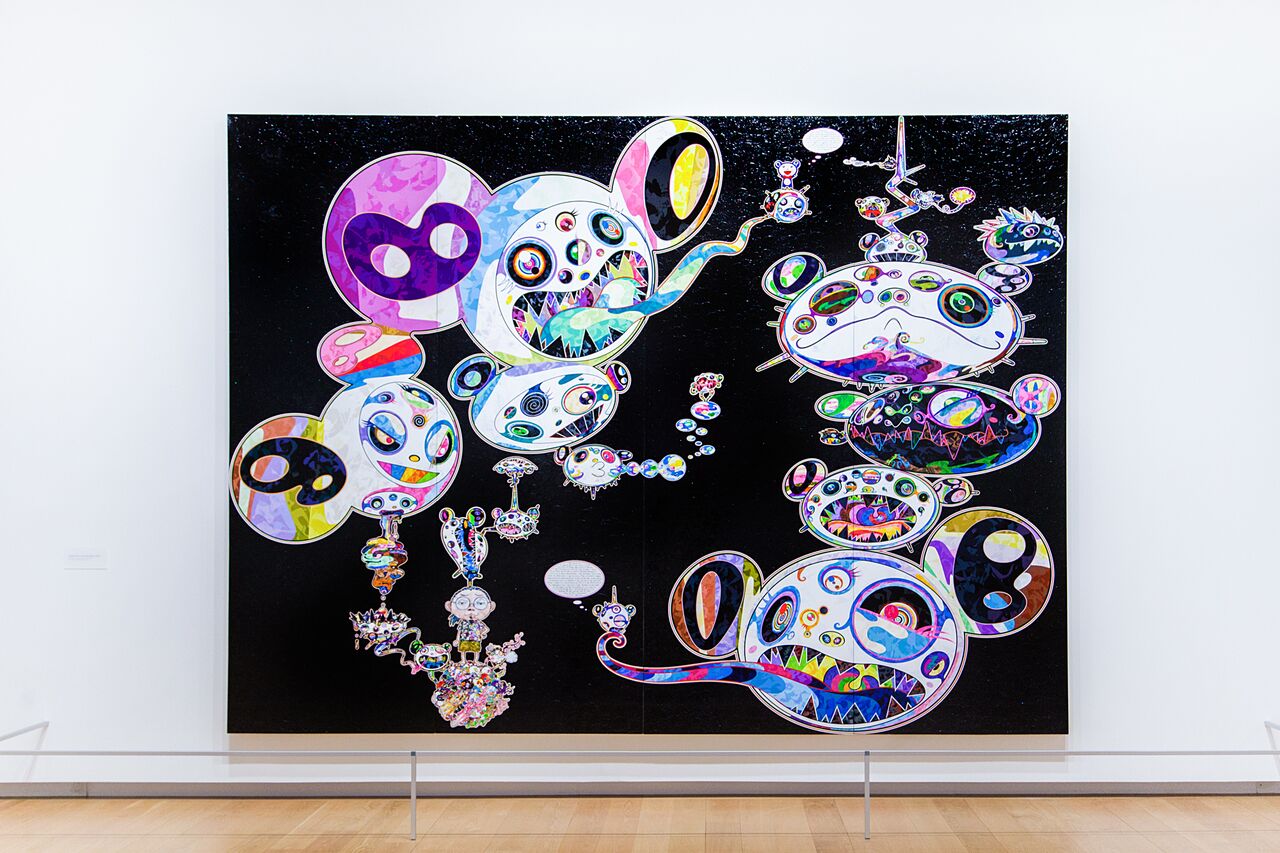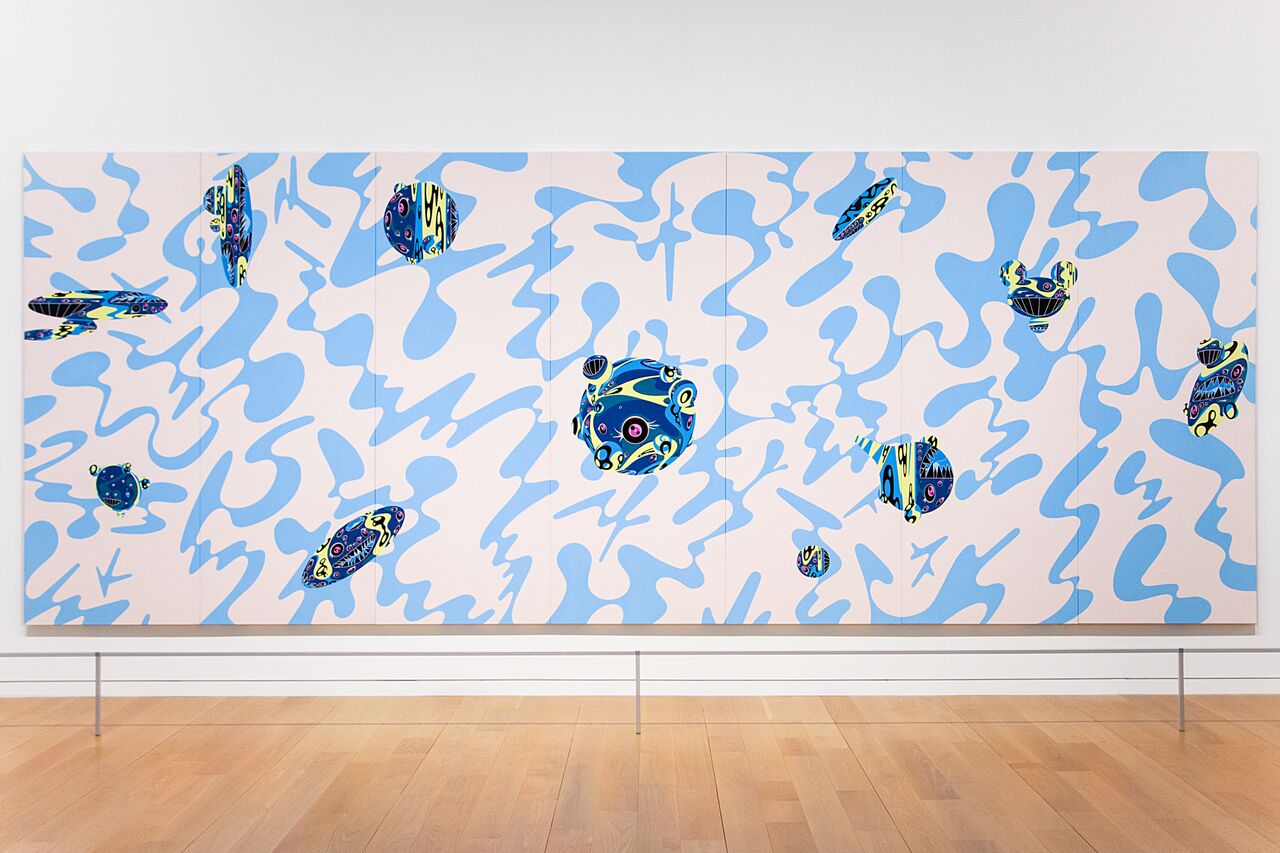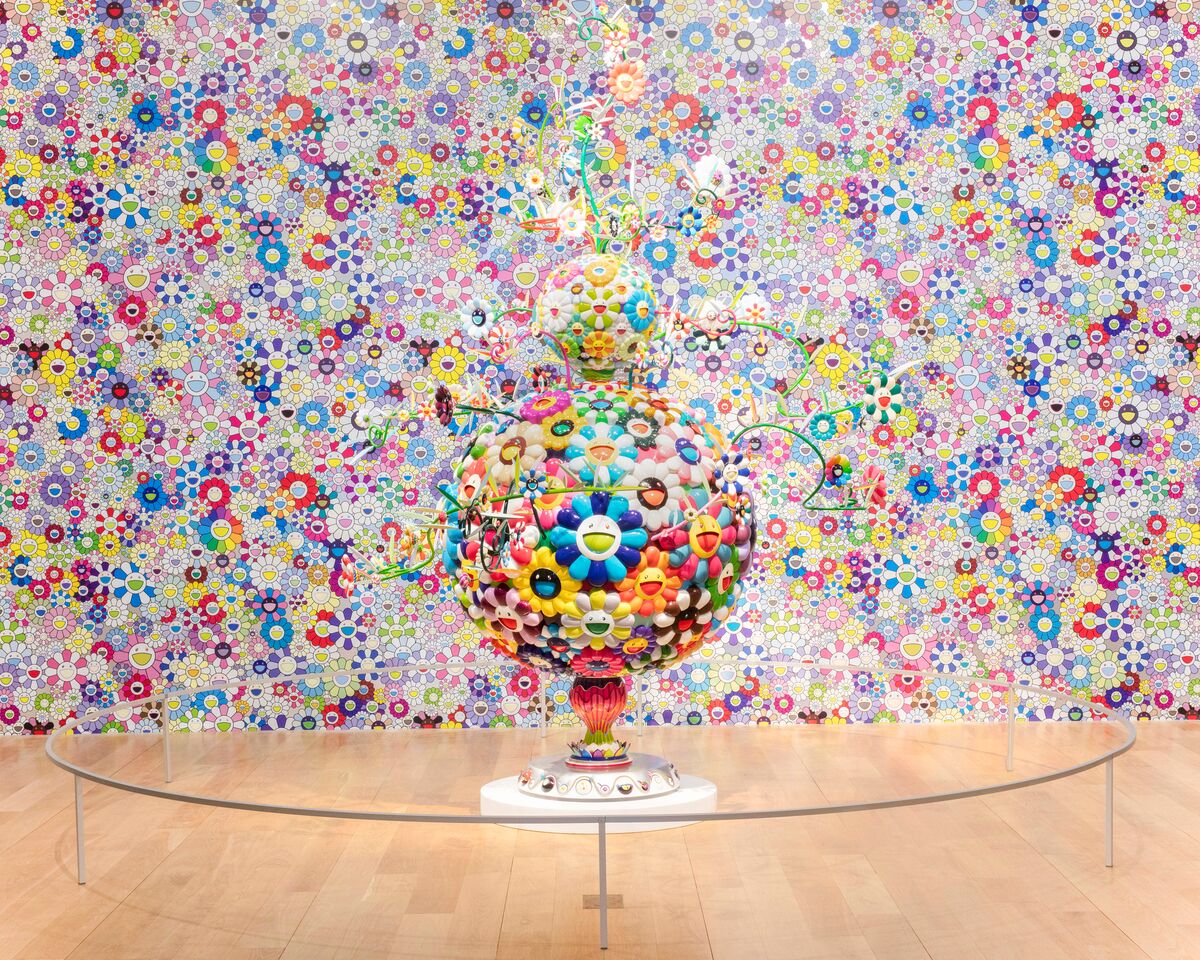above: Takashi Murakami Flower Matango (d), 2009 Oil paint, acrylic, fiberglass and iron Overall: 124 × 103 9/16 × 80 1/2 in. (315 × 263 × 204.4 cm) ©2009 Takashi Murakami/Kaikai Kiki Co., Ltd. All Rights Reserved. Courtesy Perrotin
Takashi Murakami Cosmos, 2003 Hand silk-screened wallpaper Dimensions variable Sheet: 45 1/4 × 60 1/4 in. (114.94 × 153.04 cm), twenty sheet set ©2003 Takashi Murakami/Kaikai Kiki Co., Ltd. All Rights Reserved. (Background Wallpaper)
I went into the Fort Worth Modern with low expectations. Just like the KAWS show which ended last January, the Takashi Murakami exhibition is all about selling a lot of tickets. Splashy colors, outrageous garishness, and meticulous fabrication are some of the thoughts that came to mind when walking around this major retrospective. Thankfully this was a retrospective, so the substance of this sprawling exhibition came into focus. So, if the glam and glitz didn’t appeal to you, at least some of the narrative of this artist’s life was an interesting read as you walked around the museum.


Murakami might have featured Japanese cartoon and pop culture as a rejection to Western-style Pop art, but in the end, I just see more of a return to Disney style pop. Murakami has his own cartoon mouse-like character and most of his sculptures look like something you might find on a ride at an amusement park. Sure the cartoon style is different, but some of the execution feels oddly familiar. Though some sculptures are a little too adult for Disney, even these sculptures don’t have a great deal of punchiness to them. Murakami critique of Disney isn’t shallow and obvious. He is far more clever than Banksy and Paul McCarthy. Although as clever as Murakami’s sculptures are, these work really only appeal to an adolescent sensibility.


